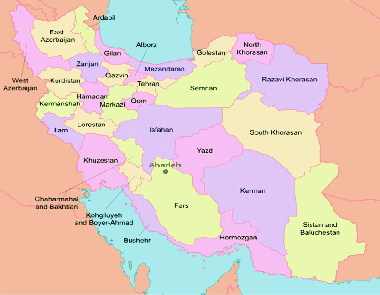Abadeh carpet - History and origins
Abadeh carpets originated from the Iranian city of Abadeh, located in the northern part of Fars province. The city has become a famous carpet-making centre over time, especially since the late 19th century, when trade and carpet-making developed. Abadeh ethnic rugs are most similar to nomadic rugs, as local craftsmen often adopted the techniques and designs of neighbouring nomadic tribes. During the 20th century, Abadeh carpets became increasingly popular on the world market, especially in Europe, where the artistic value and historical background of Persian carpets was highly appreciated. The city's proximity to Iran's historic routes has also contributed greatly to the development of the carpet-making craft, and the carpets have a distinctive, enduring quality.

Abadeh Persian carpets - Typical patterns
One of the most striking features of Abadeh Persian carpets is the combination of rich geometric and natural patterns. The central motif of the carpet is often a large rhombus-shaped medallion surrounded by smaller geometric shapes. These shapes are decorated with floral, animal or sometimes bird motifs, reflecting a close connection with nature. The designs are meticulously crafted and often have a symbolic meaning. Border patterns also play an important role in the design of Abadeh rugs. The internal designs are often surrounded by a wide decorative border of repeating geometric shapes or stylised flowers. The variety of patterns is the result of a blend of nomadic and urban influences, so that each rug tells a unique story about the richness of Persian culture.
Abadeh Iranian rugs - Colours and materials
The colour palette of Abadeh Iranian carpets is based on warm and earthy tones, achieved with natural dyes. Shades of red, brown, blue and beige are common in the carpets and complement each other harmoniously. The most commonly used colours are red and navy blue, which are the basic colours of Abadeh carpets. These colours are not only aesthetically important, but also carry symbolic meaning, often representing nature and the richness of Persian culture. Abadeh Iranian rugs are mostly made from high quality wool, produced and processed by local nomads. The softness and durability of the wool contribute to the beauty and quality of these carpets, which are made to last for a long time. The backs of the rugs often show careful hand knotting, which highlights the high quality of the craftsmanship.
Ethnic Abadeh rugs - Knotting techniques and craftsmanship
A special feature of Abadeh rugs is the high quality hand knotting, based on techniques refined over centuries. The rugs are usually made with a "Persian knot" (Senneh knot), which is tight and durable, ensuring the longevity of the rug. Each knot is placed by hand, making each piece a unique masterpiece. The craftsmanship is evident not only in the knotting, but also in the design process. The meticulous planning of patterns and colours reflects the deep artistic sense and precision of the carpet makers. This ensures that the hand-knotted carpet is long-lasting and able to withstand everyday wear and tear.
If you love unique hand-knotted rugs, Abadeh rugs are the perfect choice. It is not just an ethnic rug, but a work of art that offers a piece of Iran's rich culture and history. The craftsmanship of Abadeh carpets and the expertise of Iranian carpet makers ensure that each carpet is unique and will remain beautiful for many years to come. Remember, you are not just buying a rug, you are buying a piece of Iran's rich cultural heritage, which carries traditions that span generations.

